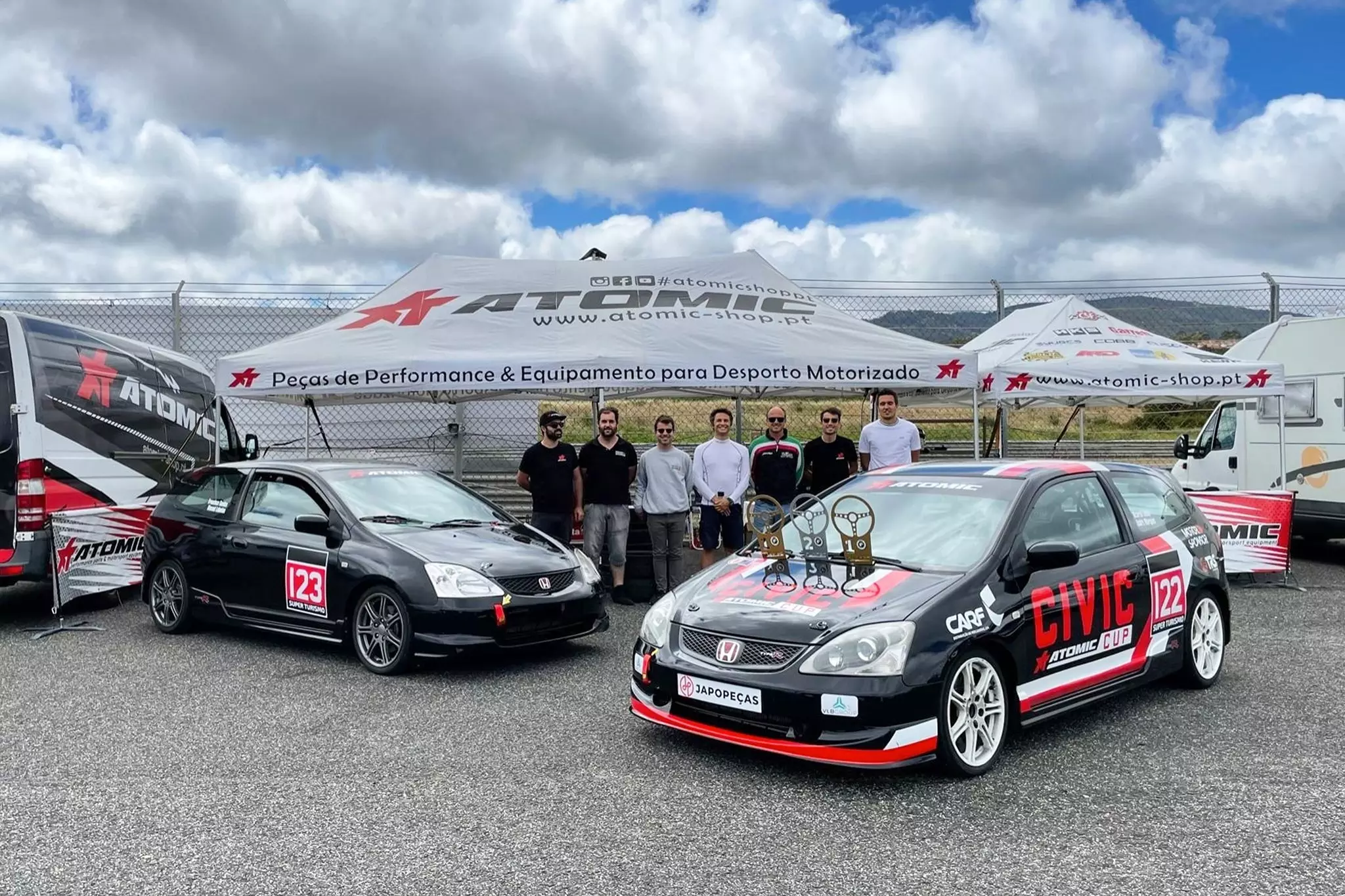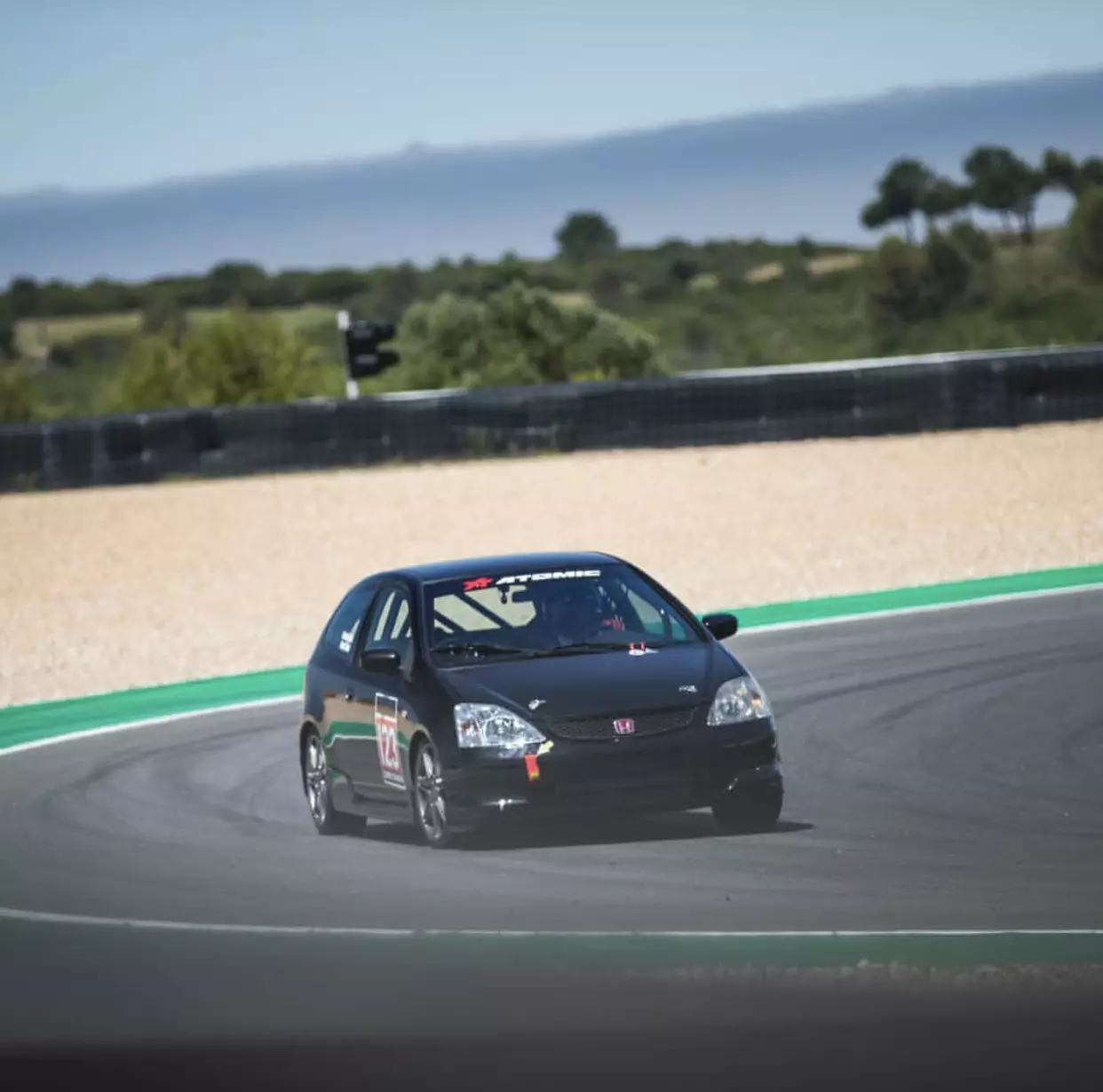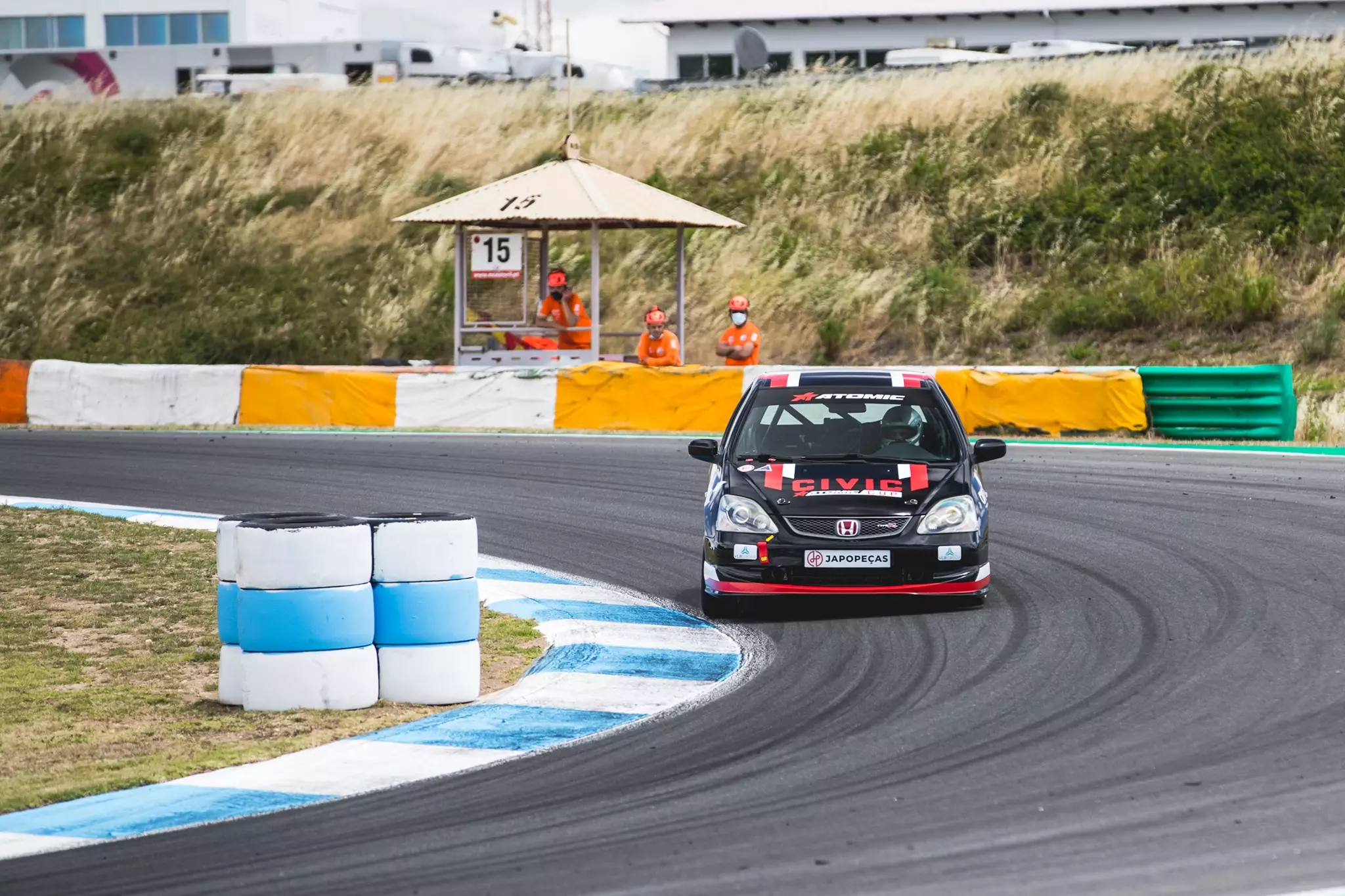The recipe is very simple but the execution is complex. The first step is the simplest: rescue a cult car from the past, remove everything that is superfluous, release its voice (read the exhaust line), improve suspensions and increase safety.
After that, you need to add a professional organization, a mix of established drivers and young promises, control costs and abuse the fun and competitiveness factor. In two lines, this is the summary of what Motor Sponsor is cooking for 2022. A «full plate» whose recipe has a name: Civic Atomic Cup.
We went to Estoril to try the first «starter» of this menu prepared by «Chef’s» André Marques and Ricardo Leitão from Motor Sponsor, with the technical support of TRS – Touge Racing Service. A tasting that I'll talk about in the next few lines.

If you can convey what I felt behind the wheel of the Civic Atomic Cup, I'm sure that in the end you will be tempted to participate and look for sponsors for a season — visit the website here, Motor Sponsor will be able to help with any queries.
Life goes on after 8000 RPM...
Before we talk a little more about my experience behind the wheel of the Civic Atomic Cup in Estoril, it is worth remembering the model that is at its base. Those born before the new millennium will remember the launch of the Honda Civic Type R EP3 perfectly. It was the first Type R officially marketed in Europe. Despite the body lines reminiscent of a cross between a minivan and a hatchback, it was a fabulous sports car.

The chassis has been impeccably tuned by Japanese engineers, and while it doesn't offer the same driving experience as the unavoidable Honda Integra Type R, it wasn't light years away from this Japanese 'monster'. Effectively, the EP3's steering could offer a little more “reading” but it wasn't anything to compromise the driving experience in a decisive way.
Then we had the engine: the famous K20A2. An engine full of soul and a huge desire to devour revs. With a capacity of 2.0 liters, this atmospheric four-cylinder engine developed 200 hp, 196 Nm of maximum torque and “sang” up to 8100 rpm with enormous determination. Today these numbers seem trite, but there is nothing trite about an “old school” VTEC engine — thank you Honda!
Even better… at all
As you've already noticed, the Honda Civic Type R EP3 has what it takes to be an excellent base for competition. It is light, well born and has an engine capable of withstanding the worst abuse. In fact, at the time of its launch, there were many trophies organized across Europe based on this Japanese model — Portugal was no exception.
Almost 20 years later, the EP3s are back thanks to the Civic Atomic Cup. Moving only with the essentials, Motor Sponsor has created a fantastic model.
What has changed? They were fitted with a Quaife auto-lock, competition dampers from Bilstein, brakes with competition pads, a performance exhaust line and the obligatory FIA-approved safety arch and the corresponding fire system. Inside everything that was superfluous was removed.

All these changes feel on track and are proven by the stopwatch. A tour of the Estoril Circuit takes around 2min04s.
The “scream” of the engine is felt in the cabin like never before — due to the absence of insulation material and the fault of the new exhaust system — and the 200 hp of power gains another life thanks to the reduction in weight.
The braking system was another of those who benefited from these changes. Despite being the original system, it withstood stoically (with no signs of fatigue!) the untimeliness of 10 laps «on the attack» in the Estoril Circuit — a less positive note for the ABS system, which became too interventional in braking with the use of reductions in Box.

For the rest, it is driving as an “everything ahead” deserves to be driven: steering slightly closed, clean driving and rear helping with mass transitions. Now add to this a grid full of established riders and promising youngsters, all under equal circumstances. In a word: magnificent.
Costs won't make anyone sleepy
Compared to equivalent championships, the Civic Atomic Cup costs less than half. The most significant part of the investment goes, without a doubt, to the acquisition of the Honda Civic Type R (15,000 euros). As for the other costs, gasoline is 200 €/day; registration costs €750/day; and the tires cost 480 €/day (Toyo R888R in size 205/40/R17), supplied by Dispnal.The front and rear brakes, provided by the Atomic Shop, last two days and cost, respectively, 106.50 euros and 60.98 euros. Finally, the FPAK license (National B) costs 200 €/year and the technical passport costs 120 euros.
In case of bumps and small bumps (or even bigger…) — sometimes unavoidable in racing — the cost of replacement parts is also very competitive. The offer of replacement parts for this model is wide and the prices, in case of an accident, won't make anyone sleepless.
It is for all these reasons that the Civic Atomic Cup grid starts to take shape. More than 12 teams have already confirmed their presence for the 2022 season — a number continues to grow. As for me, I'll look for a Type R and be right back — there are a few here.
